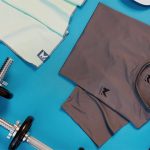Hibbett. Inc.’s second-quarter profits fell 55.9 percent but still topped analyst targets with some strength in footwear offsetting apparel weakness. The sporting goods chain reiterated its full-year outlook, bucking a trend that saw competitors, Dick’s Sporting Goods and Foot Locker, lower guidance this week.
EPS in the quarter ended July 29 was 85 cents a share, down from $1.86 a year ago but ahead of analysts’ consensus estimate of 75 cents. Sales declined 4.6 percent to $374.9 million, missing analysts’ average target of $376 million. Comparable sales decreased 7.3 percent.
When reporting first-quarter results in late May, Hibbett had reduced its full-year guidance as first-quarter sales missed plan and sales weakness continued into May. Promotions were expected at least through the third quarter to rebalance inventories
Mike Longo, president and chief executive officer, stated, “We are pleased with our performance for the second quarter of Fiscal 2024. Our business model focuses on providing an exceptional consumer experience in underserved markets and produced solid financial results despite a challenging retail environment. Our sales for the second quarter were supported by a strong start to the busy back-to-school season and we also benefited from a positive customer response to new product launches during the quarter. Our strong relationships with valued brand partners continue to provide us the ability to offer a compelling product assortment and as a result, we believe we continue to gain market share.”
Longo continued, “In today’s inflationary environment, consumers have pulled back on discretionary spending. In response, we have continued to focus on offering products that meet our customers’ more selective interests. Due to these efforts, our footwear sales, especially with our popular premium brands, have remained more consistent while our apparel business continues to reflect softer demand amid a heavy promotional environment. Although we still face considerable headwinds, we believe we are well-positioned for continued growth when market conditions improve. As always, we are focused on the long term and we remain confident in our ability to offer the most compelling brands and products while continuing to attract and retain customers in Fiscal 2024 and beyond. We are reiterating our previously stated guidance for the current fiscal year.”
Second Quarter Results
Net sales for the 13-weeks ended July 29, 2023, decreased 4.6 percent to $374.9 million compared with $392.8 million for the 13-weeks ended July 30, 2022. Comparable sales decreased 7.3 percent versus the prior year period. Brick-and-mortar comparable sales declined 7.7 percent while e-commerce sales decreased 5.2 percent on a year-over-year basis. E-commerce represented 15.1 percent of total net sales for the 13-weeks ended July 29, 2023, compared to 15.2 percent in the 13-weeks ended July 30, 2022.
Gross margin was 32.8 percent of net sales for the 13-weeks ended July 29, 2023, compared with 34.4 percent of net sales for the 13-weeks ended July 30, 2022. The approximate 160 basis point decline was driven primarily by lower average product margin which was approximately 215 basis points lower than the prior year period. This decline was driven mainly by higher promotional activity across both footwear and apparel. In addition, the year-over-year sales decline resulted in a deleveraging of store occupancy costs of approximately 100 basis points. These unfavorable gross margin impacts were partially offset by lower freight, shipping and logistics expenses as a percent of sales in comparison to the prior year quarter.
Store operating, selling and administrative (SG&A) expenses were 25.3 percent of net sales for the 13-weeks ended July 29, 2023, compared with 23.3 percent of net sales for the 13-weeks ended July 30, 2022. The increase of approximately 200 basis points is primarily the result of deleverage from lower sales volume with the largest headwinds noted in wage increases driven by inflation, incentive compensation, medical expenses and data processing costs.
Net income for the 13-weeks ended July 29, 2023, was $10.9 million, or $0.85 per diluted share, compared with net income of $24.7 million, or $1.86 per diluted share, for the 13-weeks ended July 30, 2022.
For the 13-weeks ended July 29, 2023, we opened 5 net new stores, bringing the store base to 1,148 in 36 states.
As of July 29, 2023, we had $33.1 million of available cash and cash equivalents on our unaudited condensed consolidated balance sheet and $106.9 million of debt outstanding on our $160.0 million unsecured line of credit. Inventory as of July 29, 2023, was $430.8 million, a 17.6 percent increase compared to the prior year’s second quarter and up 2.4 percent from the beginning of the year.
During the 13-weeks ended July 29, 2023, we repurchased 294,917 shares of common stock under our Stock Repurchase Program for a total expenditure of $11.0 million. We also paid a quarterly dividend equal to $0.25 per outstanding common share resulting in a cash outlay of $3.2 million.
Fiscal 2024 Year-to-Date Results
Net sales for the 26-weeks ended July 29, 2023, increased 1.7 percent to $830.4 million compared with $816.9 million for the 26-weeks ended July 30, 2022. Comparable sales decreased 1.4 percent versus the 26-weeks ended July 30, 2022. Brick and mortar comparable sales declined 1.2 percent and e-commerce sales decreased 2.2 percent compared to the 26-weeks ended July 30, 2022. E-commerce represented 14.3 percent of total net sales for the 26-weeks ended July 29, 2023, compared to 14.9 percent in the 26-weeks ended July 30, 2022.
Gross margin was 33.3 percent of net sales for the 26-weeks ended July 29, 2023, compared with 35.7 percent of net sales for the 26-weeks ended July 30, 2022. The approximate 240 basis point decline was due to a lower average product margin of approximately 300 basis points and an approximate 45 basis point increase in store occupancy costs. Freight, shipping and logistics costs have improved as a percent of sales on a year-over-year basis, partially offsetting the unfavorable average product margin and store occupancy performance.
SG&A expenses were 23.0 percent of net sales for the 26-weeks ended July 29, 2023, compared with 22.9 percent of net sales for the 26-weeks ended July 30, 2022. The modest 10 basis point increase is primarily the result of higher medical expenses and an increase in data processing costs partially offset by lower advertising and professional fees.
Net income for the 26-weeks ended July 29, 2023, was $46.8 million, or $3.61 per diluted share, compared with $64.1 million, or $4.77 per diluted share for the 26-weeks ended July 30, 2022.
Capital expenditures during the 26-weeks ended July 29, 2023, were $25.7 million compared to $30.5 million in the 26-weeks ended July 30, 2022. Capital expenditures were predominantly related to store initiatives including new store openings, relocations, expansions, remodels and updated store signage.
Fiscal 2024 Outlook
Hibbett said that although the current retail business climate remains “challenging as consumer demand has been negatively impacted by persistent inflation and higher interest rates,” it reiterated its full-year fiscal 2024 guidance.
For the year, Hibbett continues to expect:
- Total sales: Flat to up 2.0 percent
- Comp sales: Down low-single-digit
- Brick and mortar Comp sales: Down low-single digit
- E-commerce sales: Down low-single-digit
- Net store growth in units: 40 to 50
- Gross margin: 33.9 percent to 34.0 percent (35.2 percent in the prior year)
- SG&A percent: 23.3 percent to 23.5 percent (22.8 percent in the prior year)
- Operating profit percent: 7.4 percent to 7.8 percent (9.9 percent in the prior year)
- Interest expense percent: 0.40 percent to 0.45 percent
- Diluted EPS: $7.00 to $7.75 ($9.62 in the prior year)
- Tax rate: 23.5 percent to 23.7 percent
- Capital expenditures:$60 to $70 million
Photo courtesy Hibbett













